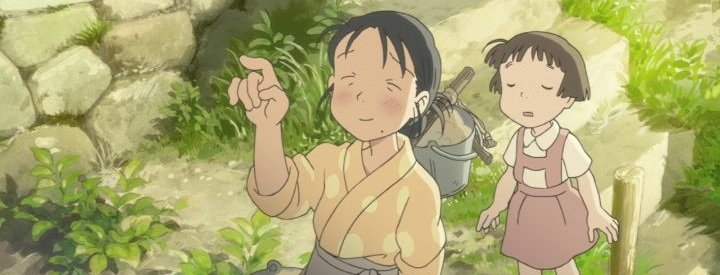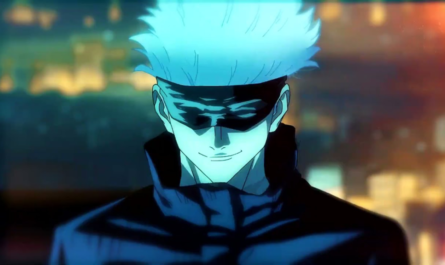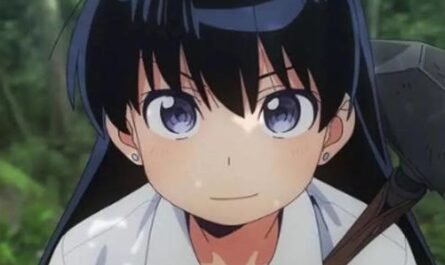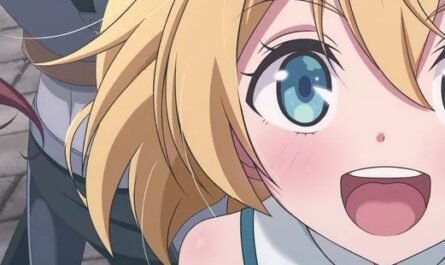Director Katabuchi Sunao’s “In This Corner of the World,” which was released in 2016, will be screened again in 88 theaters nationwide this year, marking the 80th anniversary of the end of the war. Director Katabuchi says that this re-screening will be viewed differently than in 2016. He says that there are still many mysteries hidden in the story. What are these mysteries? We asked him about his thoughts behind the re-screening of this film, which he also shares with the current state of Japanese society and the world.
Why was society like that during the war? This re-screening coincides with the 80th anniversary of the end of the war. When it was released in 2016, it was widely praised for its meticulous recreation of wartime Hiroshima and Kure. Looking back on that reception, how do you feel? Katabuchi: The late film critic Tadao Sato wrote about this film, describing it as “a strong desire to convey that era to future generations.” In it, he wrote that the atmosphere he experienced during the war was similar to that of this film, and I felt like we had achieved something. I’ve received similar feedback from many members of the public about the atmosphere. However, Tadao Sato, who was a child soldier at the time, said, “I want to know why we became soldiers like that.”
This has become a new challenge for me. In the materials for this re-screening, Director Katabuchi wrote that the mystery of why the atmosphere was like that during the war in the 1940s remains unsolved, and that he hopes to use this re-screening to find answers to that mystery. Does this mean that you’ve found the answer to the question posed by Sato Tadao? Katabuchi: Rather than seeing the answer (as in the original text), the answer just came to me.
When I was making that film, I was trying to understand what that era was like by collecting solid, objective evidence one by one and integrating it. But in today’s world, there’s a widespread tendency to think that people understand something in one leap without any objective evidence. Unfounded images and simple emotional arguments increasingly drive society as a whole.
Suzu-san must have grown up in this kind of atmosphere. Suzu-san is from a generation that doesn’t know anything about the prewar era. She’s a laid-back person, but she was also swept up in the atmosphere of the time and became part of the system. Katabuchi: Suzu-san’s generation doesn’t know anything about anything before the war. In Japan, the terms “emergency” and “wartime” came into use after the Manchurian Incident in 1931.
This atmosphere has been around since Suzu-san was six years old, around the time she started elementary school. She grew up in that environment and lived there until she was nearly 20 years old. Suzu doesn’t know much about society outside of it. Her sister-in-law, Keiko, a moga (modern girl), knows the era before that. She sternly tells Suzu not to wear Western clothing, but she, who also knows prewar society, probably senses a contradiction. But Suzu doesn’t have that same contradiction. I think we can still be on Keiko’s side at this juncture, but if the current, stingy atmosphere of conflict over everything continues for years to come, more and more people, like Suzu, may emerge who don’t know about a time when things weren’t like this.
When I saw this film when it was released in 2016, I had the image of Suzu as a woman struggling to survive amid the tragedy of war. Watching it again now, I was struck by the dramatic change she experienced after losing her right hand, and I wondered where that aggressive attitude came from within her. Katabuchi: I’m glad you saw it that way. There’s a line in the film that goes, “Our battle is to continue living by using whatever we have,” but since wartime began in 1931, I imagine her life was constantly exposed to “war.” There’s a scene where Suzu is wearing a white apron and a sash from the Greater Japan Women’s Association.
The Greater Japan Women’s Association was a subordinate organization of the Imperial Rule Assistance Association. The Imperial Rule Assistance Association originated from the desire to create a one-party political party in Japan, similar to the Nazis. However, this was rejected by the Constitution, and the association was renamed the “Association.” It also included organizations such as the Greater Japan Women’s Association, which required married women to join.
The Imperial Rule Assistance Association was reorganized into the Volunteer Citizen Corps in March 1945, and the Greater Japan Women’s Association was absorbed into it. This was to be reorganized into the Volunteer Citizen Combat Corps during the battle for the Japanese mainland. Wearing an apron and waving a flag, it was inevitable that she would be organized as a fighting force.
I wonder to what extent that kind of behavior constitutes “living a normal life.” If Suzu hadn’t lost her right hand, she would have been a combatant. In those “emergency times,” simply going about your daily life could get you drafted into the military. Katabuchi: People don’t clearly remember when and why things ended up that way.
Even now, when you buy food at a convenience store, chopsticks are included, but they used to come with toothpicks, but now they don’t. People can’t remember when toothpicks disappeared, and before they knew it, they had become a part of their daily lives. It’s important always to understand and reason about why you’re in the position you’re in. So the reasons for the global belligerence we see today also need to be verified and examined one fact at a time. Katabuchi: That’s right. We need to understand things logically.
Why did you change the key visual? This is a re-screening to mark the 80th anniversary of the end of the war. Is that also due to your thoughts about the current world situation? Katabuchi: Yes, that’s true. At the 2016 screening, I often talked about how “Suzu from that era has so much in common with us today,” highlighting her tranquility and courage. But now, people like Suzu are truly being born all over the world.
That feeling led me to create this key visual. The image depicts Suzu’s lost right hand. Katabuchi: I wanted to reconsider the meaning of this transparent hand stroking Suzu’s head in the ruins of a field. And I also want to remember that this was the very first day of “our” 80 years. The 2016 key visual showed Suzu smiling amid everyday life, but this one leaves a very different impression. Katabuchi: “Even during wartime, normal life existed,” so this time, I feel like we need to look at it from the opposite perspective. We were shocked when Russia began its invasion of Ukraine, but now it has become a part of everyday life.
The same goes for Gaza and Iran. At the same time, Japan is becoming poorer, and an increasing number of people are struggling to make ends meet, so there are certainly some similarities to that time. Katabuchi: It has nothing to do with the war, but until last year, no one could have imagined that there would be a shortage of rice and that people would have nothing to eat. Unbelievable things are happening all the time, but you get used to them. Katabuchi: That’s right. So, this time, I want people to see Suzu as an “alien.” We’ll see a different side of Suzu. Is it okay to accept all of that about her, including her gentle and brave side? There will be more points to think about. I see her as a foreign body.
Katabuchi: Nine years ago, I thought it was essential to empathize with her and rediscover the wartime era. But I thought it might be better not to stare at Suzu, who fits so neatly into the wartime atmosphere. When she rolls up a piece of paper from the US military, she says, “Our battle is to use whatever we have to continue living,” and I wonder when she first used the word “battle.”Mizuhara Tetsu told her to “stay the way you are,” but was Suzu able to stay “the way she is”? If Suzu had changed, I would like you to pay attention to such points as how long the “just-as-she-is” that Tetsu spoke of existed. Film information Voice cast: Non, Hosoya Yoshimasa, Inaba Natsuki, Omi Misato, Ono Daisuke, Han Megumi, Iwai Nanayo / Shibuya Tengai
Director and scriptwriter: Katabuchi Sunao Original work: Kono Fumiyo “In This Corner of the World” (published by Core Mix) Planning: Maruyama Masao Assistant director and screen composition: Uratani Chie Character design and animation director: Matsubara Hidenori Music: Kotringo Producer: Maki Taro konosekai.jp Production manager: GENCO Animation production: MAPPA Distribution: Tokyo Theatre (C) 2019 Kono Fumiyo / Core Mix / “In This Corner of the World” Production Committee











